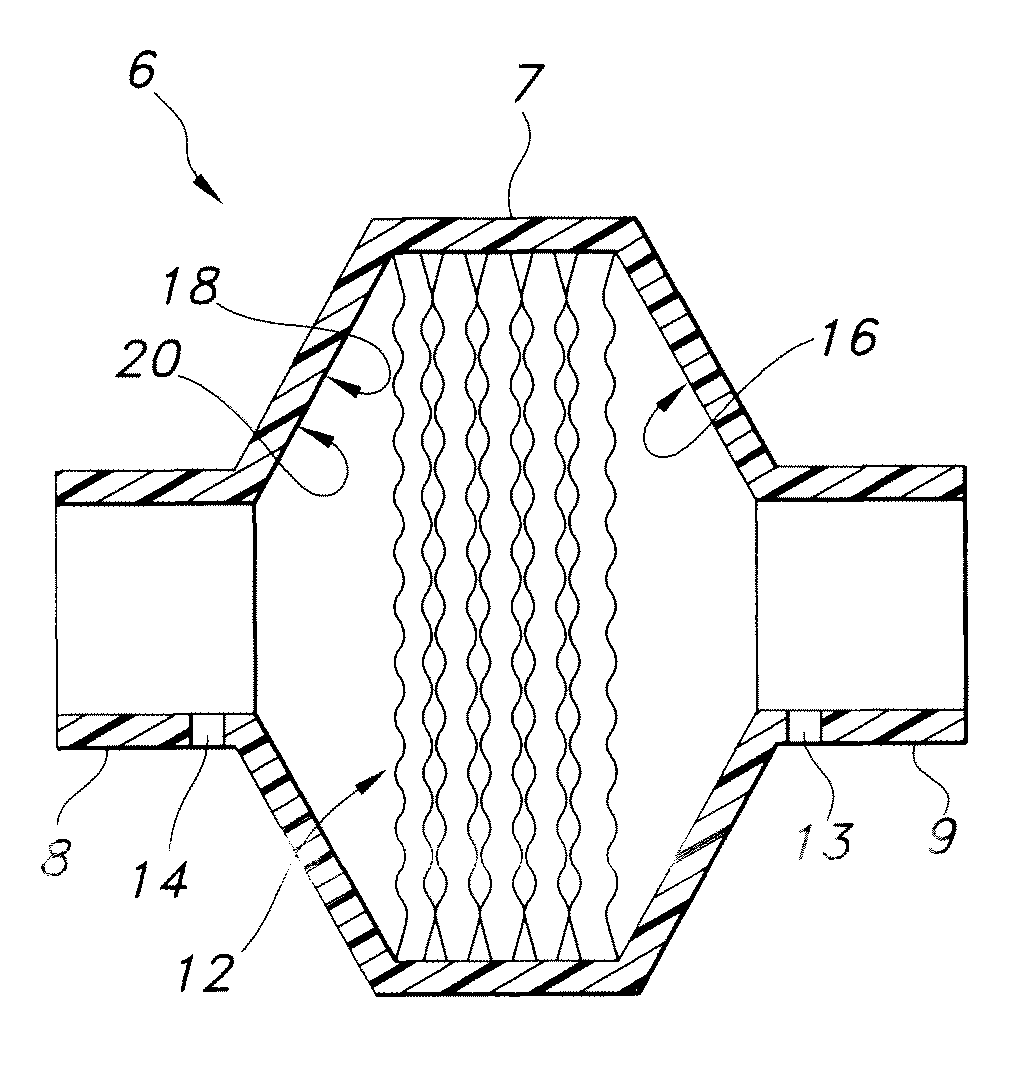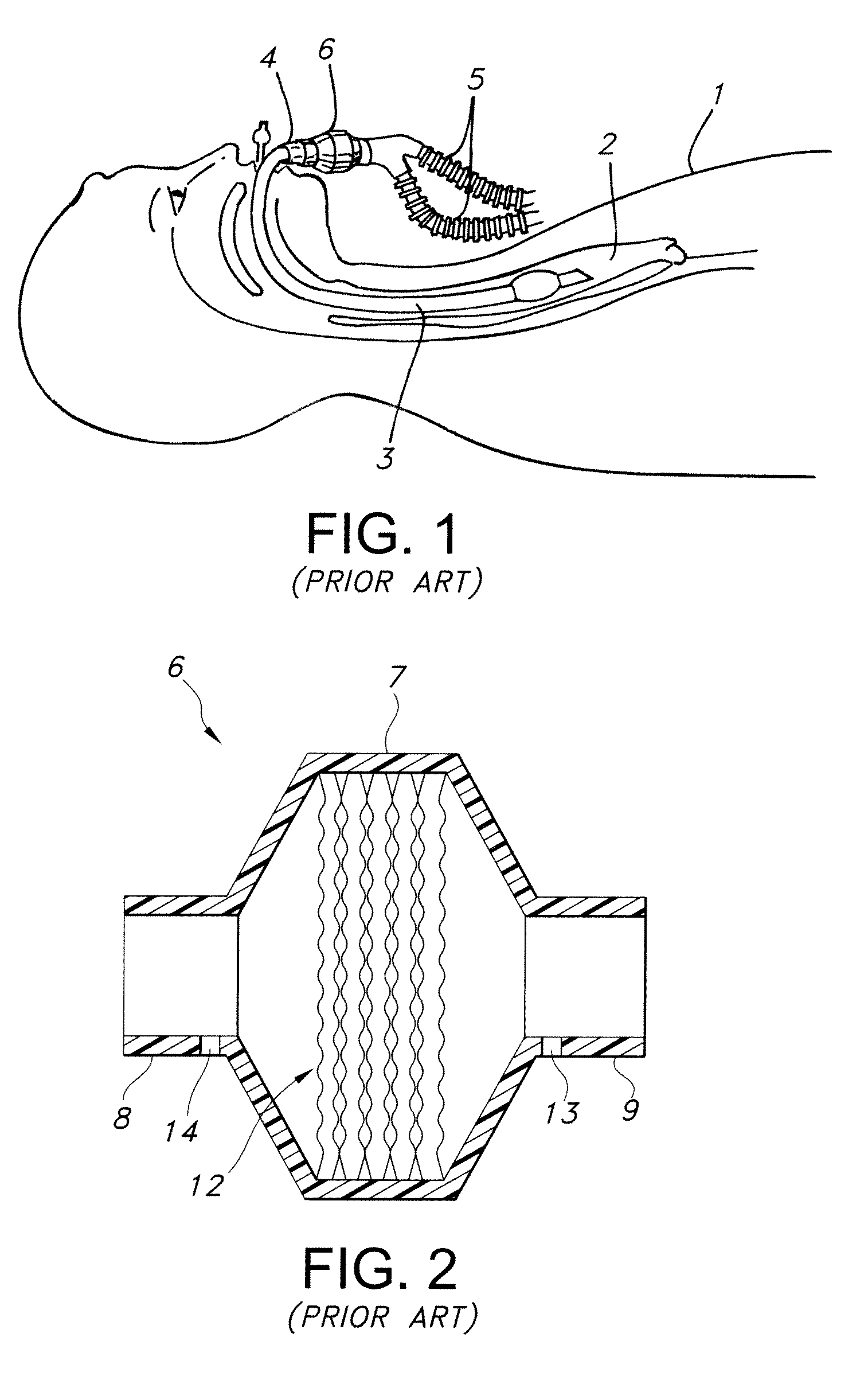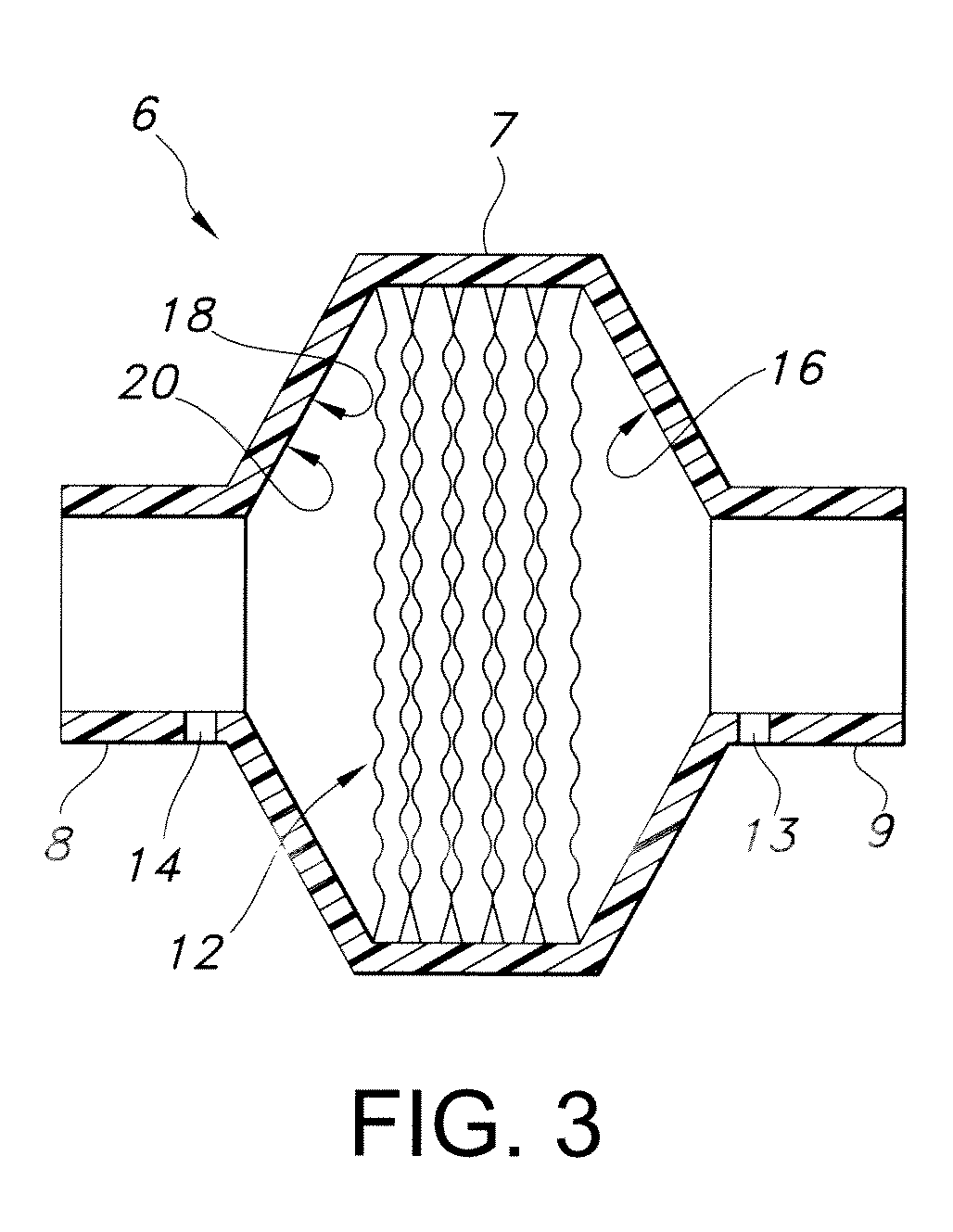Moisture indicator for heat and moisture exchange devices
a technology of moisture indicator and heat and moisture exchange device, which is applied in the direction of instrumentation, diagnostic recording/measuring, analysis using chemical indicators, etc., can solve the problem that the proposed device may have a vivid color chang
- Summary
- Abstract
- Description
- Claims
- Application Information
AI Technical Summary
Benefits of technology
Problems solved by technology
Method used
Image
Examples
example 1
[0030]Crystal violet lactone (1.0 g, from Aldrich Chemical Company, Milwaukee Wis.) was mixed with an equal amount of 2-sulfosalicylic acid (also from Aldrich) to give an off-white colored powder. This powder (0.3 g) was placed on a glass slide and spread out to give a thin coating. The slide was placed into an incubating oven (at 37° C. and >95% humidity) for 24 hours. The off-white powder did not show any signs of color development. In contrast, when 0.5 ml of water was placed on a sample of the powder mixture a blue color rapidly developed, i.e., in less than one minute.
example 2
[0031]Malachite Green lactone (1.0 g from Aldrich) was mixed with an equal amount of 2-sulfosalicylic acid to give an off-white colored powder. This powder (0.3 g) was placed on a glass slide and spread out to give a thin coating. The slide was placed into an incubating oven (at 37° C. and >95% humidity) over night. The off-white powder did not show any signs of color development. In contrast, when 0.5 ml of water was placed on a sample of the powder mixture the green color rapidly developed in less than one minute.
example 3
[0032]Cochineal (1.0 g, Sigma Chemical Company, St. Louis Mo.) was mixed with an equal amount of 2-sulfosalicylic acid to give a violet colored powder. This powder (0.3 g) was placed on a glass slide and spread out to give a thin coating. The slide was placed into an incubating oven (at 37° C. and >95% humidity) over night. The violet powder did not show any signs of color development. In contrast, when 0.5 ml of water was placed on a sample of the powder mixture the purple color changed to a bright red color in less than 3 minutes.
PUM
 Login to View More
Login to View More Abstract
Description
Claims
Application Information
 Login to View More
Login to View More - R&D
- Intellectual Property
- Life Sciences
- Materials
- Tech Scout
- Unparalleled Data Quality
- Higher Quality Content
- 60% Fewer Hallucinations
Browse by: Latest US Patents, China's latest patents, Technical Efficacy Thesaurus, Application Domain, Technology Topic, Popular Technical Reports.
© 2025 PatSnap. All rights reserved.Legal|Privacy policy|Modern Slavery Act Transparency Statement|Sitemap|About US| Contact US: help@patsnap.com



